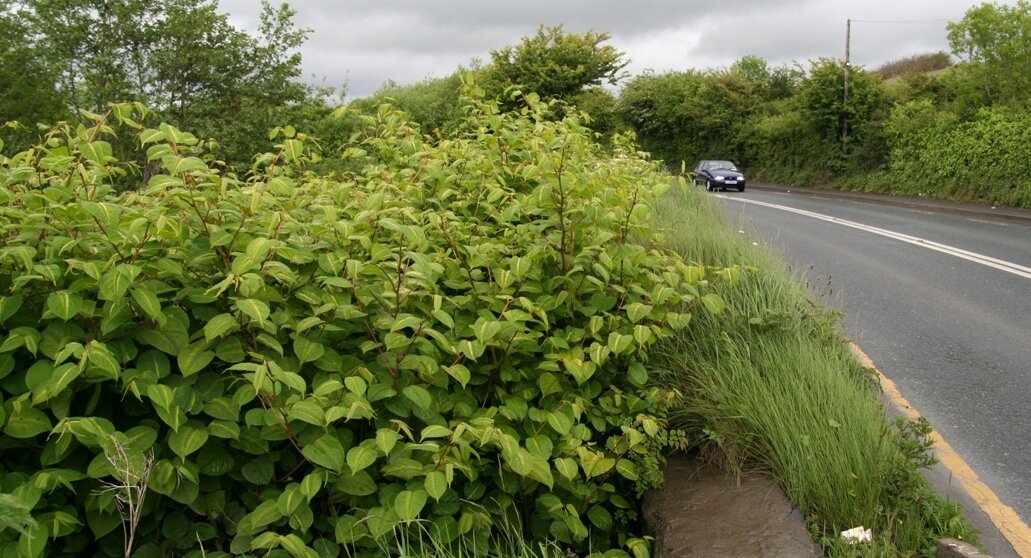
Invasives
IAPS (Invasive Alien Plant Species)
The most common invasive plant types are:
Japanese knotweed (Fallopia japonica)
Giant knotweed (Fallopia sachalinensis),
Bohemian knotweed (Fallopia x bohemica)
Himalayan knotweed (Persicaria wallichii)
Himalayan balsam (Impatiens glandulifera)
Giant hogweed (Heracleum mantegazzianum)
Giant Rhubarb (Gunnera tinctoria)
The most common of these is Japanese Knotweed. There are roughly 1,200 lengthy scientific articles on JKW. The most concise document might be that of the NRA in 2010, which can be found here: https://www.tii.ie/technical-services/environment/construction/Management-of-Noxious-Weeds-and-Non-Native-Invasive-Plant-Species-on-National-Road-Schemes.pdf
Weed Control Ltd. have been killing invasives since 1999, and have tested and refined scientific results for better performance in Irish conditions. Some popular products should not be used. Fast kills are misleading. Only the long term elimination is relevant.
Japanese Knotweed requires multiple applications over three to five seasons, though the amount of herbicide is low, (there is no organic product known to be effective). Mild infestations require three seasons, established mature infestations typically require five seasons treatment.
For accuracy, kill rates are measured 1YAT (1 year after treatment). This gives true results and is the international protocol.
Our kill rates over three years are:
Year 1 = 97% (the typical international kill is only 70%)
Year 2 = 2%
Year 3 = 1%
Established mature infestations will require 5 seasons.
Other important points to note:
We use many treatment systems depending on location. Weed wiping and injection is used to protect sensitive plants.
Remote locations may require manual or mechanised treatment.
Roadside stands are treated with high output systems in line with Chapter 8.
See our impressive results.
Before treatment, 1.2 ha Japanese Knotweed.
After treatment, prior to season two.
Before Treatment
After Treatment
Before Treatment
After Treatment (14 days)





